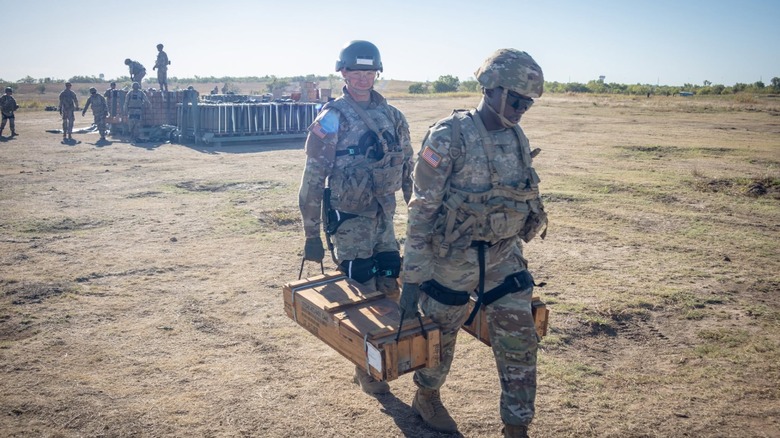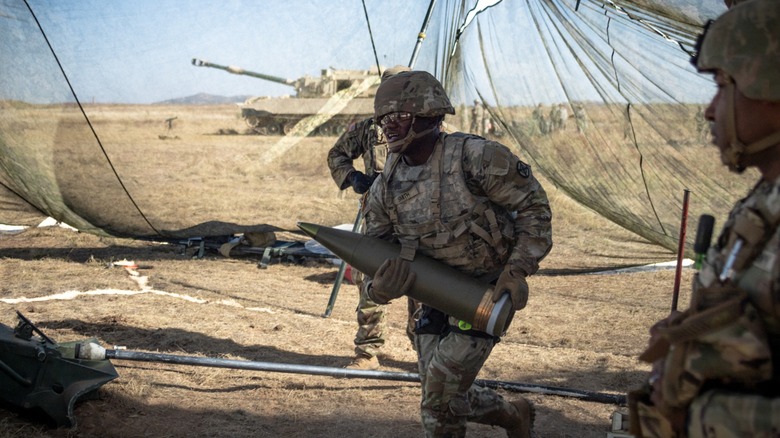Is The US Military Developing Powered Exoskeletons For American Troops?
When you hear that the U.S. military is working to create powered exoskeletons for its troops, odds are, your mind goes right to something like a real-life Iron Man suit of armor. While that's what many headlines online might suggest, the reality of modern exoskeletons is that they do exist, are in development, and have been for longer than you might imagine. Sure, it would be great to jump into a suit of armor for full-body protection, but for now, that pipe dream is left to the world of comic books and feature films.
However, what's currently being developed is fairly impressive and indicates that the technology has plenty of room to expand. Instead of a full suit of armor, modern exoskeleton technology aims to reduce the load a soldier needs to carry into the field. An average troop's kit, which includes their weapon, ammunition, body armor, and additional gear, weighs anywhere from 90 to as much as 140 pounds, depending on their mission and function within the unit. That's a lot of strain on the human body, but exoskeletons aim to fix that.
A powered military exoskeleton may never become a reality, but the technology could theoretically bear the brunt of the weight, reducing the strain on individual soldiers. Additionally, reducing weight while increasing strength means that personnel could conceivably work longer than they otherwise could due to a reduction in the impact on their endurance. Research and development have been underway, off and on, for decades, and a recent push in 2024 indicates a renewed interest in potentially outfitting troops on the battlefield with robust powered exoskeletons.
What's being developed
In late 2024, soldiers from the Army's 1-78 Field Artillery Battalion training unit at Fort Sill, Oklahoma, conducted a three-day proof-of-concept exercise using off-the-shelf exoskeleton units. These are not ruggedized or built for military operations, but they gave the unit a better understanding of the available technology that would be needed to improve them for military use. While wearing these exoskeletons, the soldiers hauled M109 Paladin howitzer artillery shells weighing up to 104 pounds each. Army Combat Capabilities Development Command (DEVCOM) didn't reveal which commercial models were tested.
The test follows the Army awarding SUITX with a contract (via SAM), stating, "This exoskeleton will serve as a critical tool for evaluating the potential benefits of robotic assistance in increasing soldier endurance, strength, and overall operational effectiveness." This means that the military isn't actively developing a specific powered exoskeleton for use in and out of combat, but is instead taking the first steps toward making that happen.
Granted, tests are only a small part of what needs to be done to introduce any new tech for regular use. Previously, Project Pathfinder developed a military exoskeleton called the Soldier Assistive Bionic Exosuit for Resupply (SABER), which is now sold by HeroWear as the Apex 2. The exoskeleton reduces back strain on every lift by as much as 40%, but the military hasn't adopted it. More research and development are necessary for widespread adoption, but with technology continuing to improve, it may only be a matter of time.

